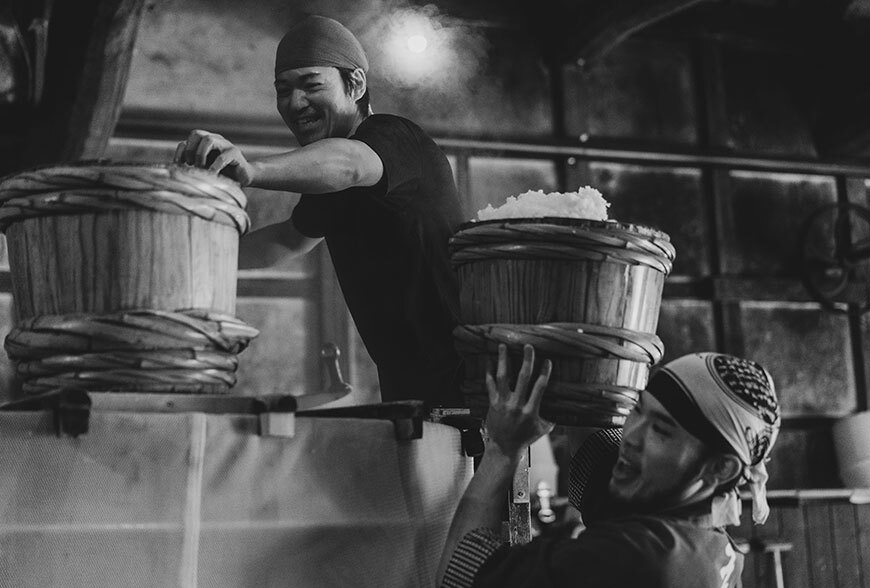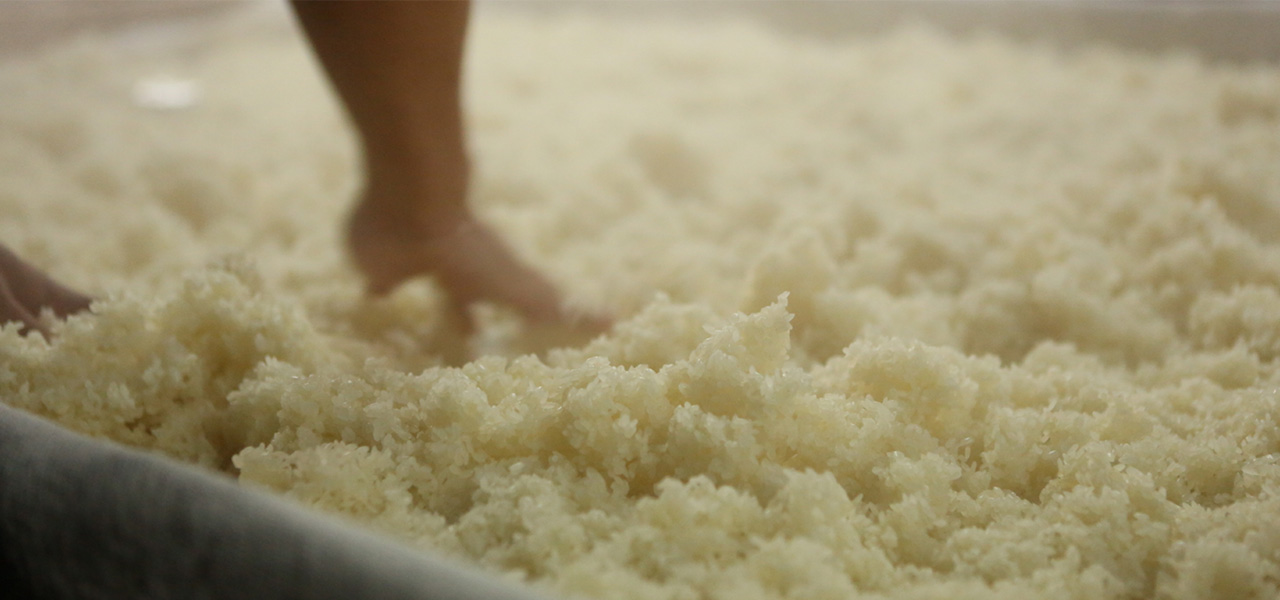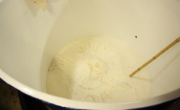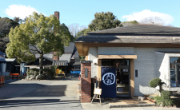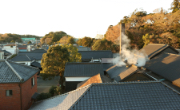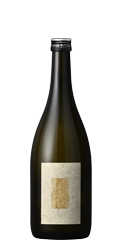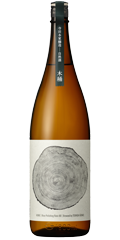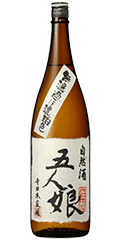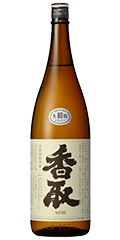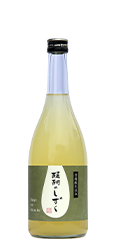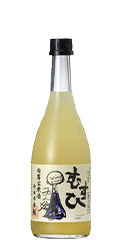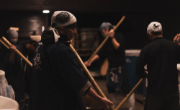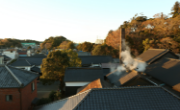Product InformationKIOKE
Old-fashioned natural materials
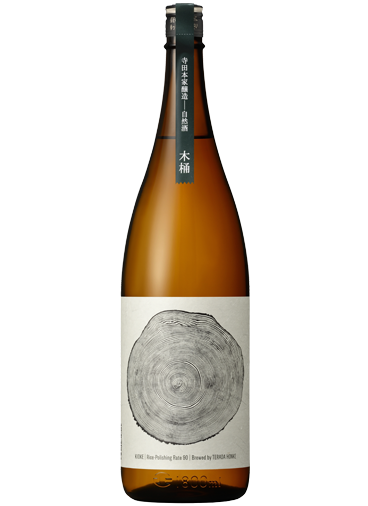
Many tools are used in sake brewing. In the past, natural materials such as wood and bamboo that were available locally were abundantly used, but gradually these have been replaced with plastics. Wooden vats are also an example. After the war, sake breweries began to use tanks made of such materials as enamel, which was easy to handle. As the number of sake breweries using traditional wooden vats decreased, the number of craftspeople that can create these handmade tools is also getting fewer. And because the demand for wood, bamboo, and other natural materials is on the decline, people are not going into the forests as often as before. This is one of the factors leading to the thickening of mountain wilderness.
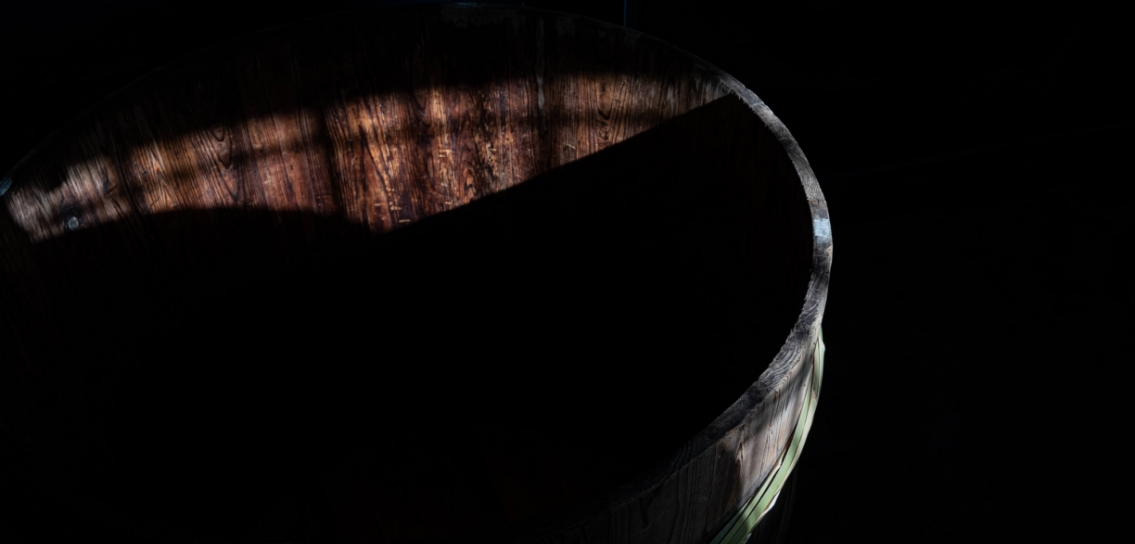
Wooden vats: Existing side by side with fermentation culture
Like many other sake breweries, Terada Honke was also hit by the wave of modernization. When we decided to pursue natural sake brewing, we began to stop using machinery and gradually shifted to using traditional handmade tools, such as wooden vats and bamboo colanders.
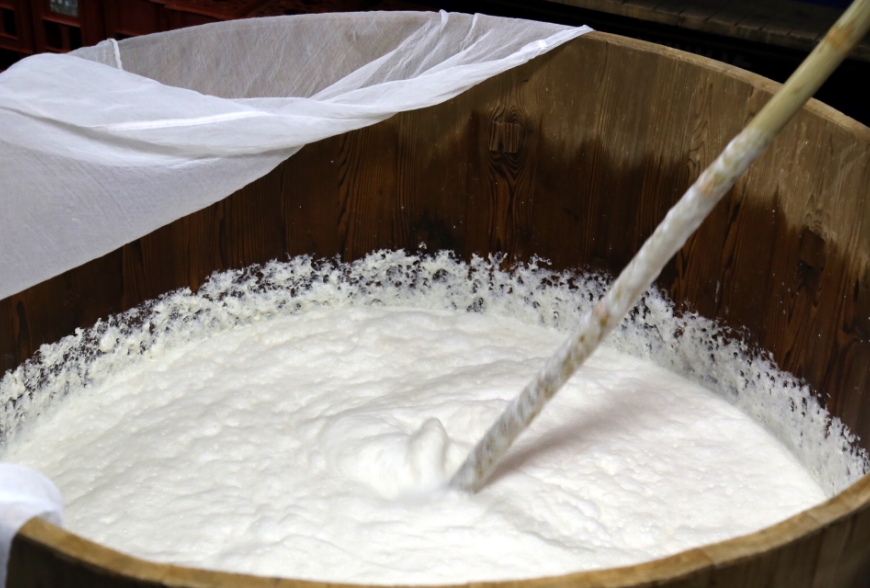
Wooden vats: A haven for microorganisms
There are countless small pores on the surface of the wood that can contain air and moisture that make the wood less susceptible to the outside atmosphere and less impacted by temperature change. Wooden vats retain heat and are breathable, making it a comfortable home for microorganisms and a suitable environment for active fermentation.
A variety of microorganisms live in wooden vats. We know that there are still many that remain undiscovered. Microbial ecosystems are created within each brewery, and many microorganisms that are involved in the production of sake are unique to the environment maintained in each brewery.
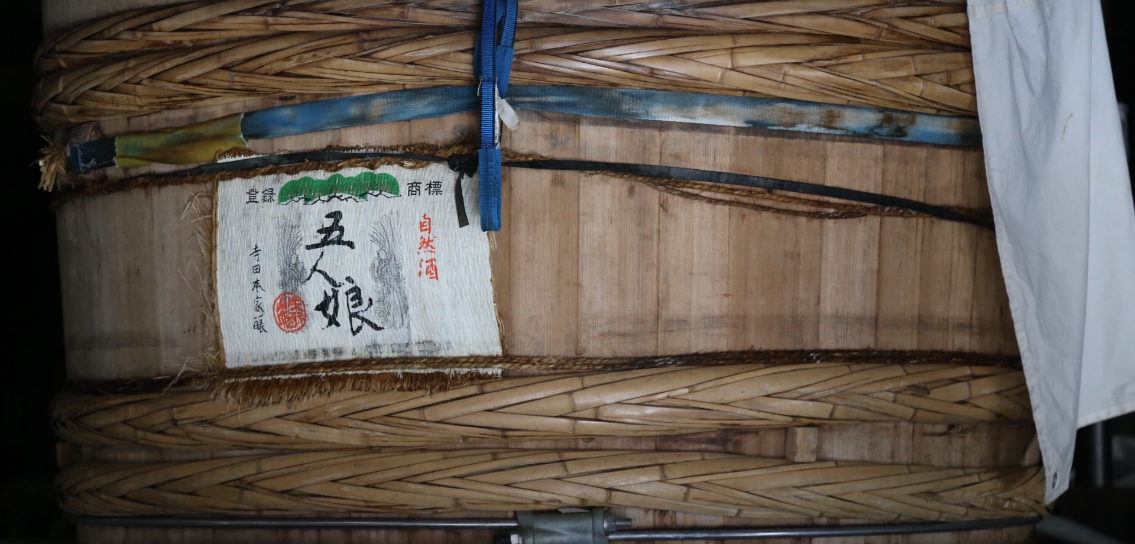
Wooden vats: Existing side by side with fermentation culture
In the old days, wooden vats were used with great care for brewing sake, shoyu (soy sauce), and miso (fermented soybean paste). When sake breweries purchased a new vat, they would normally use it for multiple years, ranging from several to three decades. When it came to the end of its life as a vat for sake brewing, a shoyu or miso brewery would pick it up and reuse it after replacing the wooden boards or reforming it into a smaller vat. And when the vat ends its second life, it would go to the hands of a brewery specializing in pickles and would be reused after being turned into an even smaller tub. In such a manner, one wooden vat is used very carefully while having its shape and location changed, little by little. Finally, the tub becomes firewood, ending a full life that spanned over 100 to 200 years.
